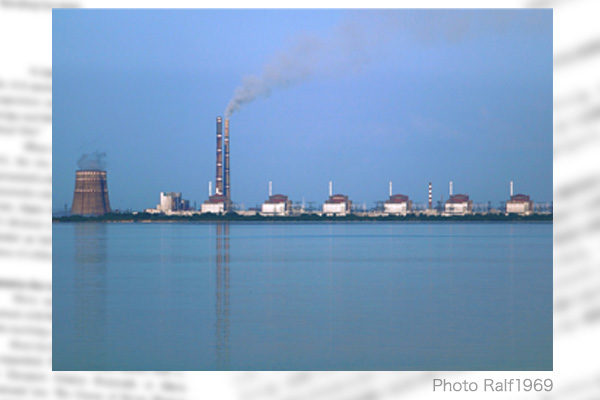In the early hours of March 4, Russian forces intruded into the Zaporizhhzhya nuclear power plant compound in southern Ukraine and took control of the plant. With six of the 15 nuclear reactors in Ukraine, it is Europe’s largest nuclear plant with total output capacity at 6 million kilowatts. In Ukraine, nuclear plants account for 51% of electricity supply. Russia has attacked Ukrainian oil facilities and natural gas pipelines as well in a bid to disrupt energy supply and compel the Zelensky government to surrender.
Intrusion making it difficult for plant staff to carry out jobs
Since the early stage of the war, the International Atomic Energy Agency has been worried that the Russian invasion might endanger Ukrainian nuclear power plants. On February 24, when Russian forces launched the invasion, IAEA Director General Rafael Grossi stressed that the IAEA General Conference adopted a decision in 2009 saying“any armed attack on and threat against nuclear facilities devoted to peaceful purposes constitutes a violation of the principles of the United Nations Charter, international law and the Statute of the Agency.”
On March 1, Russia told the IAEA that Russian forces took control of an area around the Zaporizhhzhya nuclear plant. Local residents gathered on a highway leading to the plant and installed barricades to defend the facility. But Russian forces shelled the crowd and brought military vehicles into the plant compound, forcing the facility to effectively stop operation.
The six reactors at the Zaporizhhzhya plant are VVER-1000 pressurized water reactors developed by the former Soviet Union with safety measures similar to those in Western Europe. The reactors are different from the RBMK-1000 graphite reactor at the Chernobyl nuclear power station known for its grave accident in which nuclear fission grew rapidly
The operation status of the Zaporizhhzhya nuclear plant in the morning of March 4 local time was as follows:
Unit 1: Shut down
Units 2 and 3: Disconnected from the grid and cooling down
Unit 4: Operating with output cut to 690,000 kw
Units 5 and 6: Cooled down
The status indicates that the nuclear power plant was in a process to be disconnected from the grid for shutdown. Only Unit 4 was operating at around 70% of its capacity to provide electricity to the other five units. This is because the shutdown of all six units would force electricity supply to depend on emergency diesel power generators that may be difficult to fuel over a long time during the war. If all alternating-current power sources to cool reactor cores are lost as seen in the Fukushima Daiichi nuclear power plant accident, the cores will melt down. As emphasized by IAEA’s Grossi in his statement on March 5, Russian forces should be kept away from the nuclear plant and its staff to allow the staff to “carry out their jobs safely and securely.”
Energy cutoff to seriously affect civic life and economy
Russian forces’ control and shutdown of the nuclear power plant is clearly designed to cut off energy supply and affect civic life and economic activities to force Ukraine to surrender. The Russians are likely to seize and shut down in sequence other nuclear plants in Ukraine. Power outages in the cold season could endanger the nation’s survival. I sincerely hope that Western solidarity and support to Ukraine would be further strengthened in the wake of Russian forces’ attack on and control of the Zaporizhhzhya nuclear power plant.
Tadashi Narabayashi is a specially appointed professor at the Tokyo Institute of Technology and a director at the Japan Institute for National Fundamentals.


